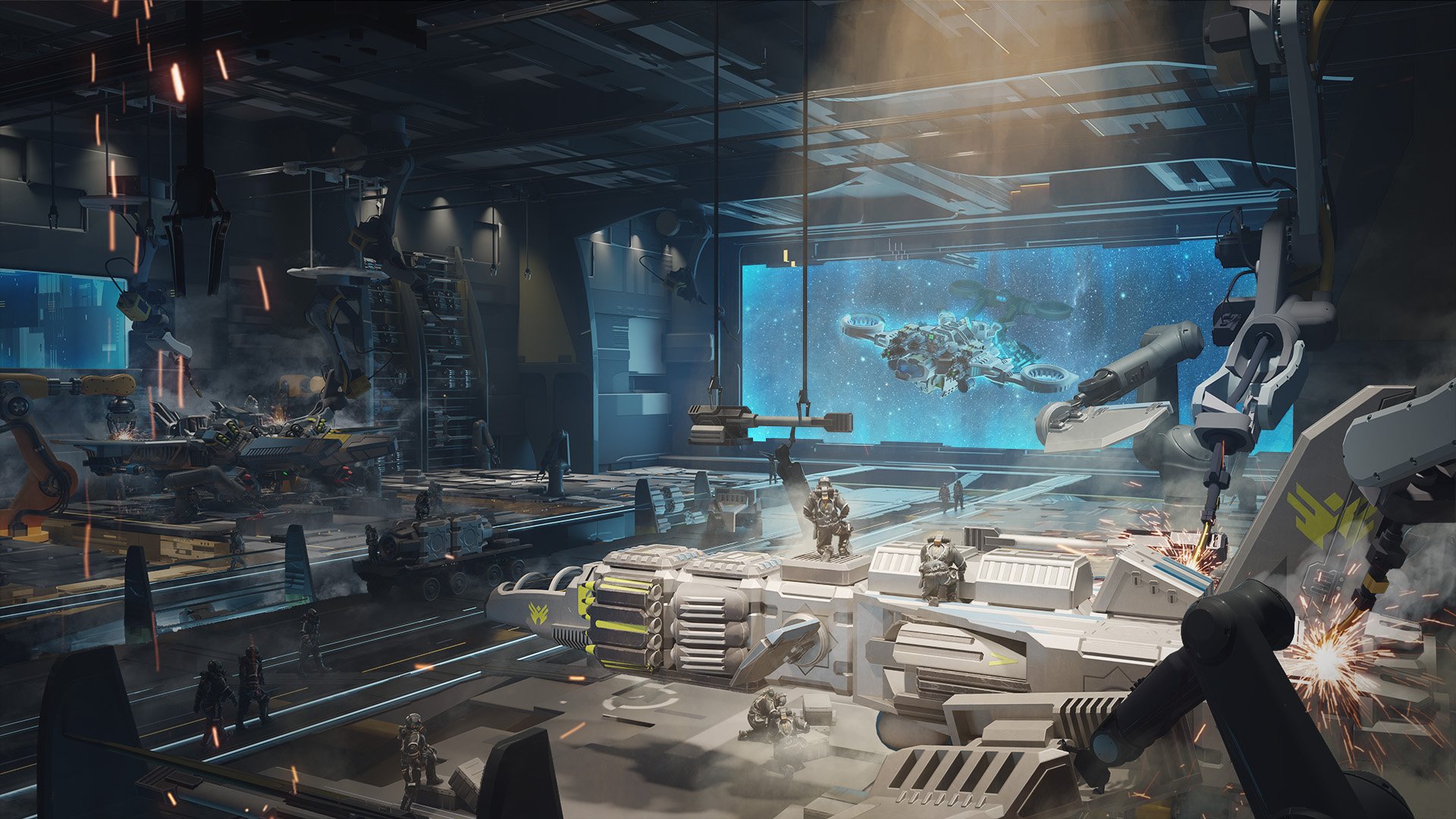Build to Battle (epilogue)
You stand in the massive docking bay, marveling at the deconstruction process as A.I. driven, robotic arms move about the half pulled apart Sabre; picking at it like old world vultures stripping the meat from the bones of a dead deer. You’ve never seen a deer. You’ll never see a deer. In fact, anything to do with the Sol system comes to you from archived records and passed down stories. You were born here, in the Nexus system, on Relay Station Delta-IV.
A tracked shuttle loader rumbles past you with a cargo load of cores and a set of wings.
“Alright, rookie,” says the Chief Engineer, “pay attention. You get a hot one today. Commander needs a Falx assembled for tomorrow’s mission. And not just your standard build…nope. Experimental fighter! Must be your lucky day!”
A node separator moves in, articulating from the hangar’s ceiling , telescoping down to remove the cockpit. It’ll go in storage, ready to be pulled down and used again, when needed. The Falx cockpit is entirely different. You know, you’ve studied all the builds. The schematics. The plans.
“Now normally I’d take this one,” says the Chief Engineer, “but I’m going to give you a chance.”
“Thank you?” you manage, stepping up to the build console. You log in and pull up a design schematic. You plug in four core nodes, arranged to create a two-by-two square, and hit enter.
The request is processed through to the component racks where workers will cycle the parts forward, to the loaders, and then, to the articulated builders who will assemble the requested pieces. From there, it’s all interlocking node tech – the marvel of the craft that protect and transport you, that house you, cycle water for hydroponic crops, or drive the machines that terraform new colonies.
The loader delivers the four cubes and you watch as the builder moves them into place. Each cube fuses to the adjoining cube, creating a seamless network of power and energy and information, all working in conjunction. Next are the XR135 missile racks, and then the nose cones.
Your fingers dance across the screen, calling up the FALX Experimental Fighter’s necessary components. How many ship builds have some of these cubes seen, you wonder? What stories could they tell? What missions will they undertake across the vastness of space?
The scorch marks on two of the cores speak volumes. A burnt line carved along one surface could only have been done by a Mantis Laser.
You don’t know if the pilots lived, or died, but you do know that there’s a pilot waiting, right now, to climb into the cockpit of the fighter you’re building.
You take a deep breath and get back to the design. There’s work to be done.

